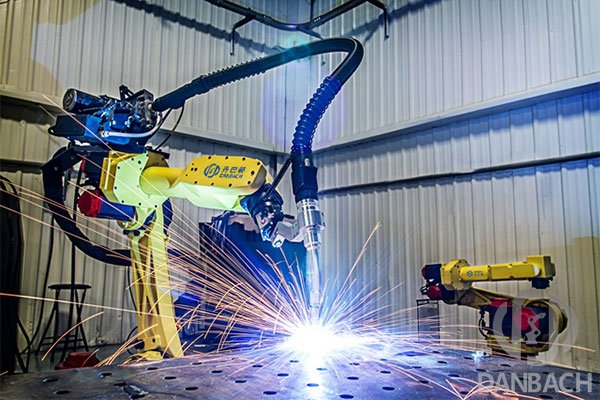Arc welding robots are widely used in many industries such as general machinery and metal structures. The arc welding robot is a flexible welding system including an arc welding attachment, and the performance has special requirements. In arc welding operations, the welding torch should track the bead movement of the workpiece and continuously fill the metal to form the weld. Therefore, the speed stability and trajectory accuracy during the movement are two important indicators.

Under normal circumstances, the welding speed may be 5 to 50 mm/s, and the track accuracy may be ±0.2 to 0.5 mm. Since the attitude of the welding torch also has a certain influence on the quality of the weld, it is hoped that while the weld bead is being rooted, the adjustable range of the torch attitude is as large as possible, and there are other performance requirements, such as swing function, welding sensor (start point detection, Weld seam tracking interface function, gun anti-collision function.
Welding specification settings: arc starting and arc ending parameters.
Swing function: setting of swing frequency, swing, swing type.
Welding sensor: Interface function for starting point detection and weld tracking sensor.
Gun anti-collision function: When the welding torch is subjected to abnormal resistance, the robot stops and avoids damage to the operator and the tool.
Multi-layer welding function: This function can be used to automatically program the remaining layers after the first layer welding teaching is completed.
Re-arcing function: After the arc fails, it will automatically retry. As a result, job interruptions caused by welding anomalies (initial arc failures) are eliminated, and full-line parking caused by this is avoided as much as possible.
 中文
中文 English
English
